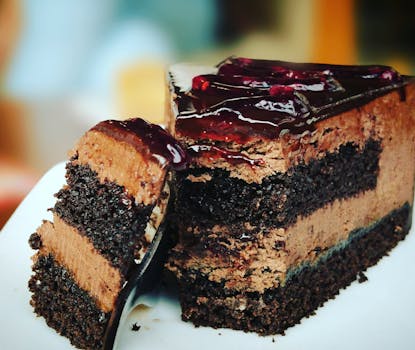Sponge Cake: The Classic Recipe, a Fluffy and Versatile Base for Cakes and Cookies
Sponge cake is a timeless classic in the world of baking, celebrated for its light, airy texture and versatility. This delightful cake serves as a perfect base for a variety of desserts, from layered cakes to cookies. In this article, we will explore the classic sponge cake recipe, its history, variations, and how it can be adapted for different culinary creations.
The Classic Sponge Cake Recipe
The traditional sponge cake is made using a simple combination of eggs, sugar, flour, and sometimes butter. The key to its fluffy texture lies in the method of preparation, which involves aerating the batter to create a light and airy structure. Here’s a basic recipe to get you started:
- Ingredients:
- 4 large eggs
- 1 cup granulated sugar
- 1 cup all-purpose flour
- 1/4 cup unsalted butter, melted (optional)
- 1 teaspoon vanilla extract
- 1/2 teaspoon baking powder (optional)
- Instructions:
- Preheat your oven to 350°F (175°C) and grease a round cake pan.
- In a mixing bowl, beat the eggs and sugar together until the mixture is pale and fluffy.
- Gently fold in the flour and baking powder, being careful not to deflate the batter.
- If using, add the melted butter and vanilla extract, mixing until just combined.
- Pour the batter into the prepared pan and bake for 25-30 minutes, or until a toothpick inserted in the center comes out clean.
- Allow the cake to cool before removing it from the pan.
A Brief History of Sponge Cake
The origins of sponge cake can be traced back to the Renaissance period in Europe, particularly in Italy and Spain. The name “sponge” comes from the cake’s ability to absorb moisture, giving it a soft texture. Over the centuries, sponge cake has evolved, with various cultures adding their unique twists. For instance, the Genoise sponge, named after the Italian city of Genoa, is known for its rich flavor and is often used in layered cakes.
Why Sponge Cake is a Versatile Base
Sponge cake’s versatility makes it a favorite among bakers and pastry chefs. Here are some reasons why it serves as an excellent base for various desserts:
- Texture: The light and airy texture of sponge cake allows it to pair well with a variety of fillings and frostings.
- Flavor Absorption: Sponge cake readily absorbs flavors from syrups, creams, and fruits, enhancing the overall taste of the dessert.
- Customization: The basic recipe can be easily modified by adding flavors such as lemon zest, cocoa powder, or spices.
- Layering: Its structure makes it ideal for layering, allowing bakers to create stunning multi-tiered cakes.
Creative Variations of Sponge Cake
While the classic sponge cake is delightful on its own, there are numerous variations that can elevate your baking game:
- Chiffon Cake: A hybrid between sponge and butter cake, chiffon cake incorporates oil for added moisture and richness.
- Angel Food Cake: Made with egg whites only, this cake is incredibly light and is often served with fresh fruit and whipped cream.
- Genoise Cake: This Italian version is richer and denser, often used in desserts like tiramisu and layered cakes.
- Chocolate Sponge Cake: By adding cocoa powder to the batter, you can create a delicious chocolate version that pairs well with various fillings.
Conclusion
Sponge cake is more than just a simple dessert; it is a versatile foundation that can be transformed into countless culinary delights. Its light texture, ability to absorb flavors, and adaptability make it a staple in both home kitchens and professional bakeries. Whether you are making a classic layered cake or experimenting with creative variations, mastering the sponge cake recipe opens up a world of baking possibilities. So, roll up your sleeves, gather your ingredients, and start baking your way to delicious sponge cake creations!
